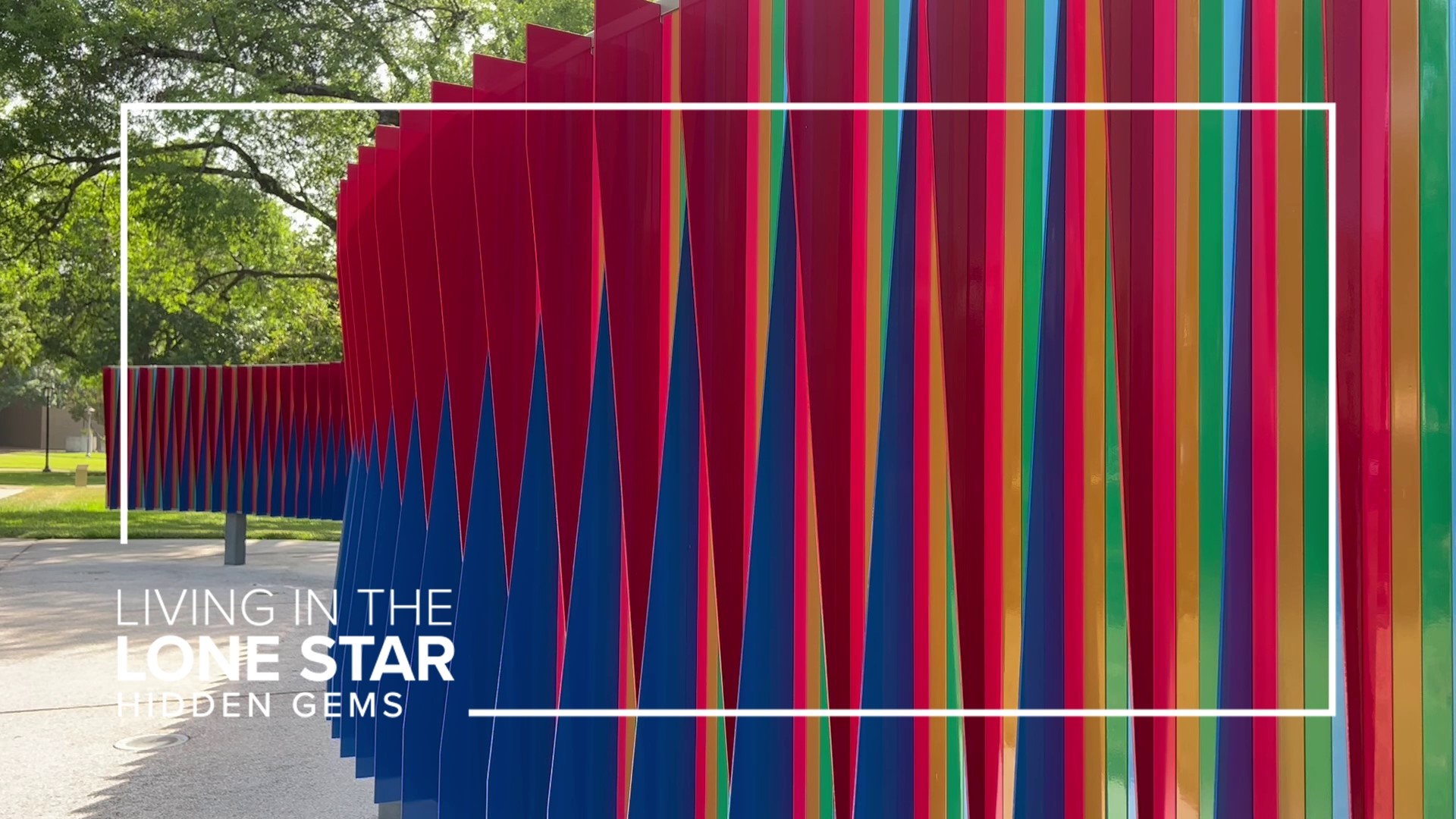HOUSTON — Even during the summer months, the main campus of the University of Houston is buzzing with activity. Students and staff walk the trails through tree-lined courtyards, sometimes not even acknowledging the public art they pass.
"It’s accessible to everybody and there is no barrier. It’s about having encounters with art wherever you are," says Maria Gaztambide, executive director and chief curator for Public Art University of Houston System.
The newest installation is going in near Moores Opera House, adding to what started in 1969 when UH became the first state agency with a public art collection.
Some pieces blend in with the architecture. Others were meant to stand out.
"The focus has always been international modern and contemporary art," Gaztambide says.
You can scroll through the full permanent collection on the Public Art UHS website and even see each individual piece.
"I think that’s a very unique opportunity and experience," says Gaztambide.
Though the artwork is available to view digitally, she encourages people to come see them in person, especially Carlos Cruz-Diez's Double Physichromie.
"People travel from all over the world to come and see it," Gaztambide says. "It’s beautiful. It’s one of my favorite pieces."
RELATED: KHOU 11's Hidden Gems
The university also has several paintings by Texas-born Dorothy Hood in its collection of more than 700 pieces, including The Angel's Key, which is on display in the lobby of the Wortham Theater Box Office.
"Dorothy Hood is an artist who is just gaining national recognition even though she was distinguished in her life," says Gaztambide. "She was born in 1912, so she was really at the forefront of American modernism."
Commissioned pieces, such as Jim Sanborn's A Comma, A, are a significant portion of the works at Public Art UHS
"He was really inspired by the diversity of our student body and faculty and staff," Gaztambide says. "He wanted to bring that in, fold that into his work."
The result is a bronze and copper sculpture that includes snippets of poems, novels and prose in Arabic, Russian, Spanish, Chinese and more.
"By day, it’s just a normal sculpture," says Gaztambide. "What’s really magical about the piece is at night, it is lit, so it becomes one with the façade of the MD Anderson Library."
Sarah Braman, who is known for works that appropriate ready-made materials and objects, is the artist behind Here. The concrete drainage pipe is outfitted with colored glass.
"The whole idea is you walk around it and you slow down and appreciate the here and now," Gaztambide explains.
RELATED: HIDDEN GEM: Smither Park
While you walk around Here, you are intended to walk through Negative Space, a series of 13 flags designed by Nigerian artist Odili Donald Odita.
According to the Public Art UHS website, he "chose to engage with color theory to thoughtfully examine the crisis of immigration, the separation of migrant families, and the current state of naturalization in the United States."
"By walking through it, you’re implicated in what’s happening at the border, whether you know about it or not, whether you know this larger story or not," says Gaztambide. "The idea that he wants to convey through that is that there’s beauty in diversity and unity in difference, as well."
Another unique piece: Texan Luis Jiménez's Fiesta Jarabe, is made of painted fiberglass.
"He was the first artist to use fiberglass for art," Gaztambide says, explaining that his father was a sign-maker and he learned to use common materials for art. "If you look at it closely, there are these brushstroke-like patterns in the piece."
Jiménez, who passed away in 2006, has a special place in the university's art community. Until his death, he taught at UH every spring semester.
"All these artists have really interesting stories," says Gaztambide.
You can learn more about those stories with a trip to the University of Houston.
"There is never a charge for experiencing our collection," Gaztambide says. "You just hop on over, park and here you are!"

